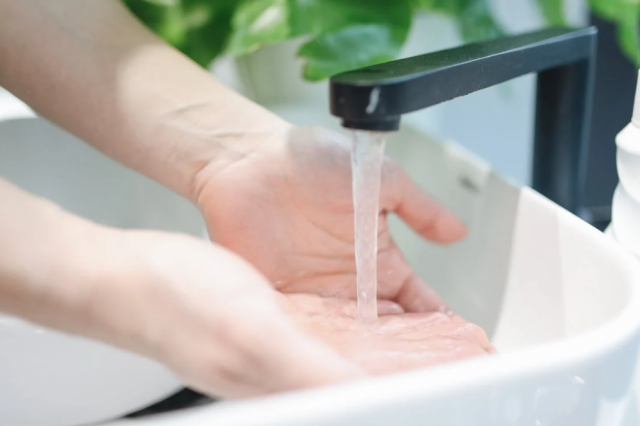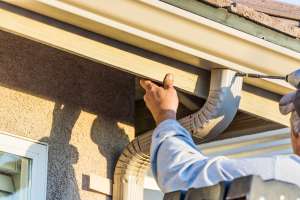Renovating your home is an exciting process, but even the most well-planned projects can come to a halt due to unexpected plumbing issues. Imagine your beautiful kitchen redesign being delayed by a leaky pipe, or your new bathroom tile getting damaged because of a hidden plumbing fault.
These setbacks not only disrupt your timeline but can also lead to significant extra costs. To prevent such headaches, it's crucial to incorporate regular plumbing maintenance services into your renovation plans. With this, you'll protect your investment and keep your renovation on track from start to finish.
Inspect Before You Start
Before any renovation begins, it's essential to inspect your home's plumbing system thoroughly. Pipes, valves, and drainage lines that are old, corroded, or improperly installed can cause significant problems once construction begins.
Start by hiring a professional to conduct a plumbing inspection to ensure there are no hidden issues. They can identify potential problems like leaks, blockages, or low water pressure, which are much easier to fix before construction is underway.
Forbes mentions that a plumbing inspection costs about $200 on average, but it's an investment that can save you money in the long run. Not only can it uncover potential issues before they escalate into expensive repairs, but it may also be required for certain real estate transactions. Before hiring a plumbing inspector, be sure to get a detailed estimate and clarify what services are included in the inspection.
Taking these preventative measures can help you avoid costly repairs during your renovation. They also save you time by preventing delays once the project is underway.
How often should I conduct plumbing inspections?
To identify any problems early, plumbing checks should preferably be carried out every one to two years. However, it's essential to arrange a check as soon as possible if you see any indications of plumbing issues, such as leaks. Your plumbing system's integrity is preserved with routine inspections.
Upgrade Outdated Plumbing Systems
USAFacts notes that as per the latest available info, approximately 522,752 households in the U.S. lacked complete plumbing access in 2021. Among these, almost 347,900 households did not have a bath or shower, while more than 419,900 lacked hot or cold running water. This lack of basic plumbing facilities is often referred to as plumbing poverty.
USA Today states that decades ago, lead pipes were commonly used in home construction, but this practice was banned in 1986. An estimated six to ten million lead service lines (LSLs) remain in operation today despite the prohibition. The gradual buildup of lead in a person's bloodstream can result in lead poisoning, which can be fatal and may hinder development in children.
Many homeowners overlook the importance of upgrading these outdated plumbing systems during a renovation. If your home has galvanized steel pipes, for instance, they may be prone to corrosion, leading to low water quality and frequent leaks. Renovations present the perfect opportunity to modernize your plumbing with durable materials like PEX or copper pipes, which can withstand wear and tear better.
Additionally, upgrading old fixtures such as faucets, toilets, and showerheads to water-efficient models can reduce future utility bills. A proactive plumbing upgrade ensures that your new home design functions as beautifully as it looks.
What is the lifespan of modern plumbing materials?
With the right maintenance, copper pipes may last up to 70 years, while contemporary plumbing materials like PEX can only last 40–50 years. They are ultimately more affordable solutions because of their lifespan, which results in fewer replacements and repairs. Choosing durable materials is essential for maintaining your home's plumbing health.
Coordinate Plumbing and Design Plans
One common mistake during home renovations is failing to coordinate plumbing with the design plan. For instance, moving a sink or shower may require rerouting pipes, which can lead to unexpected complications if not accounted for early.
WebFX highlights that the typical home can have a minor leak that wastes over 10,000 gallons of water each year. To put that in perspective, the average American uses about 90 gallons of water daily. A leaking toilet can be especially wasteful, with losses averaging around 200 gallons per day.
Communicating with both your plumber and designer ensures that the plumbing layout supports the overall design vision and helps avoid such leaks. This collaboration can also prevent costly last-minute changes and unexpected delays. Enlisting the help of plumbing maintenance services throughout the renovation process also ensures your system is in top shape.
According to Steel T Home Services, they also help catch any minor issues before these escalate into costly problems. For example, these professionals can detect small leaks, corrosion, or pressure imbalances that might not be immediately noticeable during renovation. You can prevent extensive damage and protect the longevity of your home improvements by addressing these issues early.
How can I avoid plumbing layout mistakes in renovations?
To avoid plumbing layout mistakes, engage both a plumber and a designer during the planning stage. Creating detailed blueprints that include plumbing locations helps ensure the design supports the functional requirements. This collaborative approach minimizes the risk of costly adjustments later in the renovation process.
Plan for the Unexpected
Unexpected plumbing problems can occur during renovations, despite careful planning and thorough inspections. Old pipes may crack when walls are removed, or hidden leaks may be discovered once floors are torn up. It's essential to budget both time and money for these unforeseen challenges.
You can handle unexpected plumbing issues without causing the project to fail by allocating contingency funds. Additionally, maintain open lines of contact with your contractor and plumber to promptly address any problems that may come up. Being proactive and prepared for surprises will help minimize stress and keep your renovation moving forward smoothly.
What are some common unexpected plumbing issues during renovations?
Common unexpected plumbing issues during renovations include hidden leaks, aging pipes cracking, and inadequate water pressure. These problems can arise when walls are removed or floors are opened up. Being prepared for these possibilities can help you address them quickly and keep your project on track.
Home renovations are fun, but plumbing issues can throw a wrench in the works. To keep your project on track, start with thorough inspections and upgrade any outdated systems. Make sure to coordinate your design and plumbing plans for a seamless flow.
It's also wise to plan for surprises that can pop up along the way. To safeguard your investment and make sure everything functions properly, routine plumbing maintenance services are essential. You can design a stunning and functional house without having to worry about plumbing issues if you plan ahead and take preventative action.






